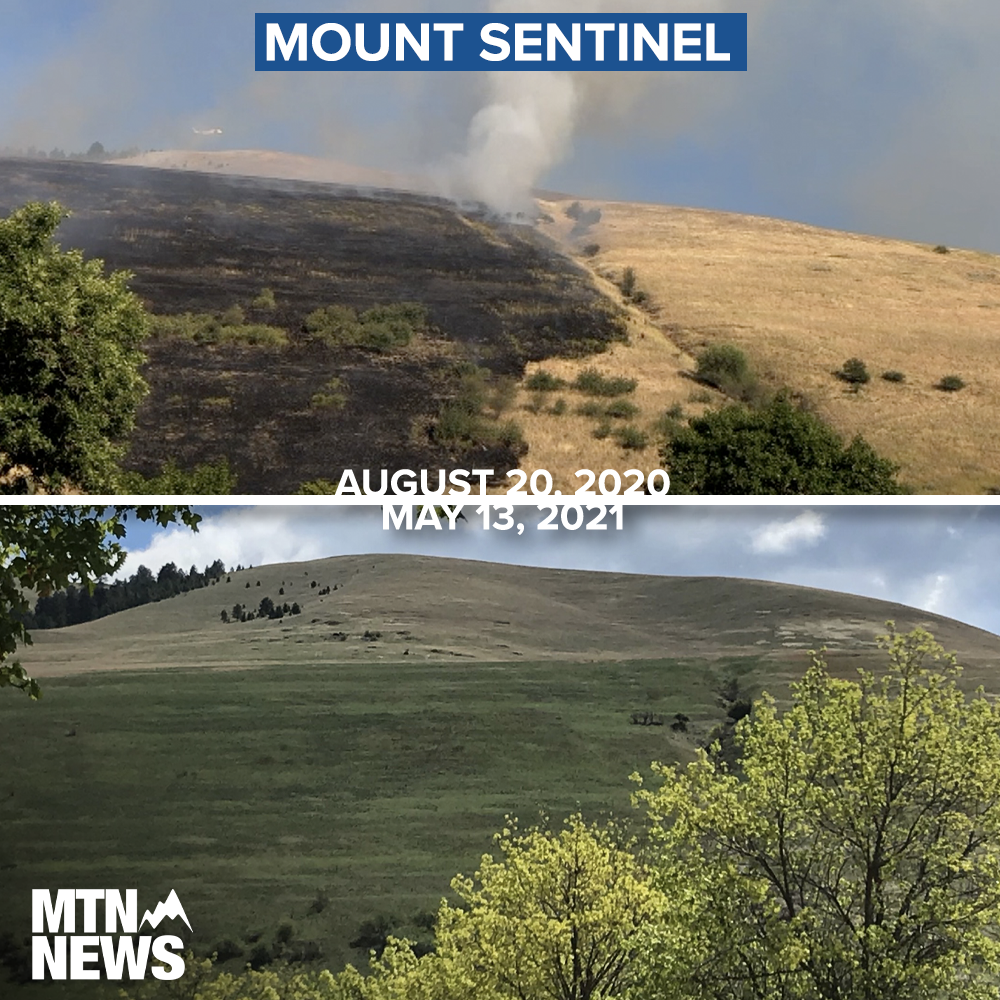MISSOULA — On August 20th of 2020, Missoulians stopped and stared.
A charcoal black color was overtaking the tan landscape southeast of town. The Mount Sentinel hillside was on fire.
The fire was contained by nightfall, but for the remainder of the year a burn scar could be seen on the hillside. Then spring hit, and the burn scar turned green, a bright contrast to the rest of the yellow hills.
MTN News talked with University of Montana Systems Ecology PhD candidate Kyra Wolf about the post-fire process. Her recently published research examines forest recovery after the 2017 Lolo Peak and Sunrise Fires in western Montana.
Though Wolf's research isn’t specific to the Mount Sentinel burn, she provided MTN News a few observations: “This fire happened on a sunny day but not like a crazy hot, windy day. So it didn't encompass the whole hillside; it was pretty well-controlled,” Wolf said.
The fire that spread across the Missoula landscape, she said, burned the dry grass on top that was essentially dead at that time of year. Because the flammable grass above ground caught fire quickly, she guessed the soil underneath did not burn as much and many plant roots were left protected. Many native plant species have roots that are especially resilient to fire and frost.
“Chances are it didn’t really burn that much into the soil, all that much at all,” Wolf explained. “What it did do, is it combusted all that organic material on the surface, and left behind nutrients, which then had the chance to percolate into the soil and help stimulate new growth after the fire."

Nutrients like nitrogen and phosphorous from burned plant matter contribute to healthy soil. So on the Mount Sentinel hillside, many plants are growing back as if nothing ever happened. Small mounds of scorched earth litter the hillside, with perfect green grass growing on top. Other plants may not have survived.
By the end of the summer the mountain side could go back to its normal appearance.
This temporary lesson in fire ecology tell us that on the surface, a wildfire may appear like a negative thing, but it has a purpose.
“One or two decades down the road, we often see burned areas as the most vital, where we have new regrowth coming back and where these ecosystems are actually really resilient,” Wolf said.
It's important to always remain vigilant about fire safety, extinguish campfires, and check fire danger conditions.
Wildfire season in Montana may be smokey this year due to a warm and dry spring season.





